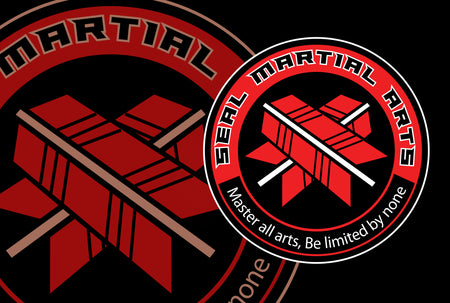
Legacy of Nunchaku: History, Origins, and Anatomy
Nunchaku, often associated with martial arts prowess and cinematic flair, holds a rich history deeply rooted in ancient traditions and practical utility. This iconic weapon, characterised by its two connected sticks, has captivated enthusiasts for centuries. Let's delve into its fascinating journey through time, exploring its origins, construction, and key components.
The origins of Nunchaku can be traced back to Okinawa, Japan, during the 17th century. Initially known as "nunchaku" or "nunchucks," these weapons were not originally designed for combat but rather served as agricultural tools used for threshing grains. However, during a period of weapon confiscation in Okinawa, peasants and farmers began to adapt these tools for self defence, transforming them into formidable weapons.
As the popularity of Nunchaku grew, its design and techniques evolved, incorporating influences from various martial arts disciplines, including karate, kobudo, and kung fu. By the 20th century, Nunchaku had gained international recognition, thanks in part to its prominent depiction in martial arts films, particularly those featuring Bruce Lee.
Anatomy of Nunchaku
Kikon Bu (Main Body): The main body of the Nunchaku consists of two cylindrical sticks typically made from hardwood, bamboo, or metal. These sticks are connected by a chain, rope, or cord, allowing for fluid movement and striking capabilities.
Himo (Connecting Material): The Himo refers to the material that connects the two sticks of the Nunchaku. Traditionally made from horsehair or leather, modern versions often utilise metal chains or durable synthetic ropes for enhanced durability and flexibility.
Kusari (Chain): In some designs, the Himo is replaced by a Kusari, which is a metal chain. This chain provides increased flexibility and maneuverability, allowing practitioners to execute swift and dynamic movements.
Ana (Hole): The Ana, or hole, is a crucial feature found at the end of each stick. It serves multiple purposes, including attaching the Himo or Kusari securely and allowing for the insertion of additional weights or decorations.
Kontoh (Top End): The Kontoh refers to the top end of each stick. This part is often rounded or slightly tapered to minimise the risk of injury during strikes while maintaining stability and balance.
Kontei (Bottom End): The Kontei, located at the bottom end of each stick, is typically flat or rounded to facilitate comfortable handling and prevent slippage during intense practice sessions.
While Nunchaku's historical roots lie in self defence and agricultural practices, its modern day applications extend beyond combat training. Today, Nunchaku is often utilised in martial arts demonstrations, fitness routines, and even artistic performances, showcasing its versatility and cultural significance.
The history and construction of Nunchaku reflect a blend of practicality, innovation, and tradition. From its humble origins as a farming tool to its iconic status in martial arts culture, Nunchaku continues to captivate and inspire practitioners worldwide, embodying the enduring legacy of ancient craftsmanship and human ingenuity.
The origins of Nunchaku can be traced back to Okinawa, Japan, during the 17th century. Initially known as "nunchaku" or "nunchucks," these weapons were not originally designed for combat but rather served as agricultural tools used for threshing grains. However, during a period of weapon confiscation in Okinawa, peasants and farmers began to adapt these tools for self defence, transforming them into formidable weapons.
As the popularity of Nunchaku grew, its design and techniques evolved, incorporating influences from various martial arts disciplines, including karate, kobudo, and kung fu. By the 20th century, Nunchaku had gained international recognition, thanks in part to its prominent depiction in martial arts films, particularly those featuring Bruce Lee.
Anatomy of Nunchaku
Kikon Bu (Main Body): The main body of the Nunchaku consists of two cylindrical sticks typically made from hardwood, bamboo, or metal. These sticks are connected by a chain, rope, or cord, allowing for fluid movement and striking capabilities.
Himo (Connecting Material): The Himo refers to the material that connects the two sticks of the Nunchaku. Traditionally made from horsehair or leather, modern versions often utilise metal chains or durable synthetic ropes for enhanced durability and flexibility.
Kusari (Chain): In some designs, the Himo is replaced by a Kusari, which is a metal chain. This chain provides increased flexibility and maneuverability, allowing practitioners to execute swift and dynamic movements.
Ana (Hole): The Ana, or hole, is a crucial feature found at the end of each stick. It serves multiple purposes, including attaching the Himo or Kusari securely and allowing for the insertion of additional weights or decorations.
Kontoh (Top End): The Kontoh refers to the top end of each stick. This part is often rounded or slightly tapered to minimise the risk of injury during strikes while maintaining stability and balance.
Kontei (Bottom End): The Kontei, located at the bottom end of each stick, is typically flat or rounded to facilitate comfortable handling and prevent slippage during intense practice sessions.
While Nunchaku's historical roots lie in self defence and agricultural practices, its modern day applications extend beyond combat training. Today, Nunchaku is often utilised in martial arts demonstrations, fitness routines, and even artistic performances, showcasing its versatility and cultural significance.
The history and construction of Nunchaku reflect a blend of practicality, innovation, and tradition. From its humble origins as a farming tool to its iconic status in martial arts culture, Nunchaku continues to captivate and inspire practitioners worldwide, embodying the enduring legacy of ancient craftsmanship and human ingenuity.
